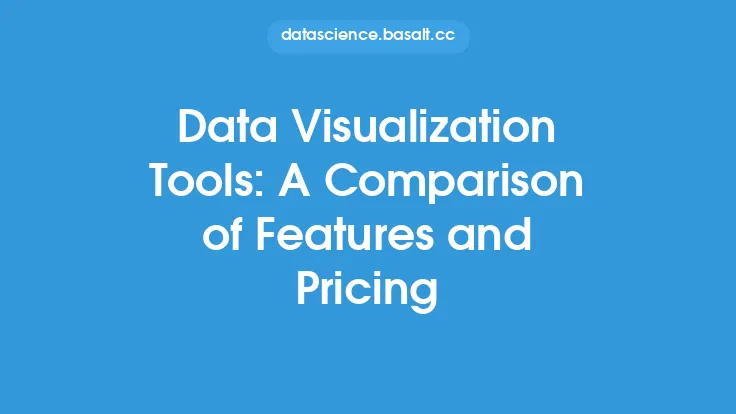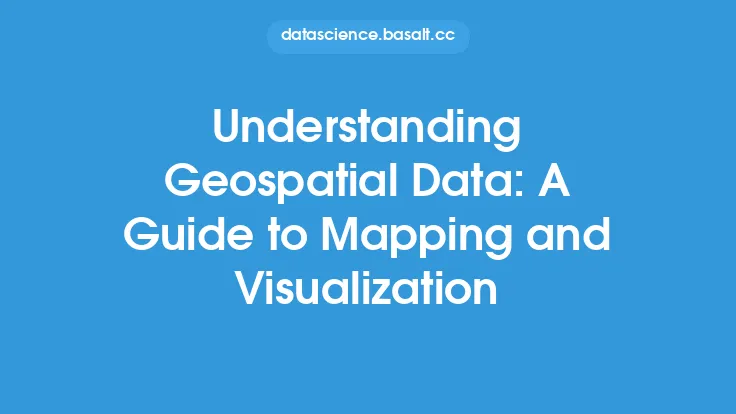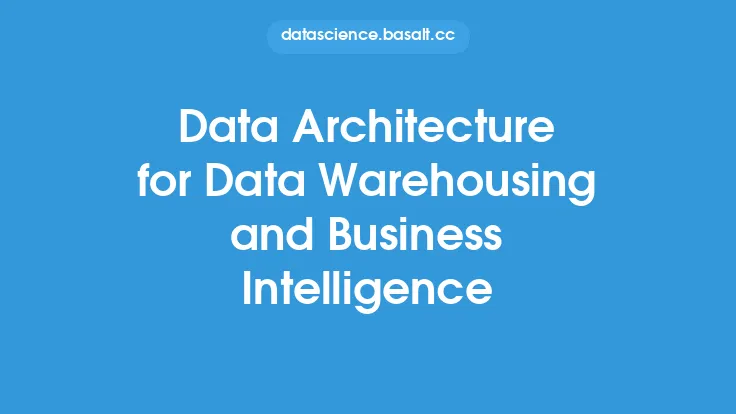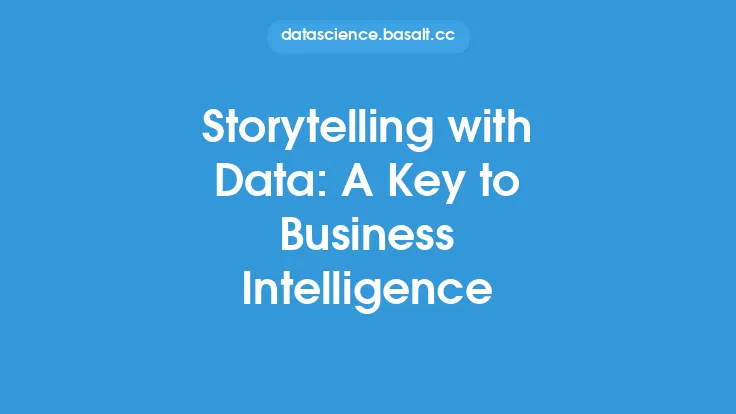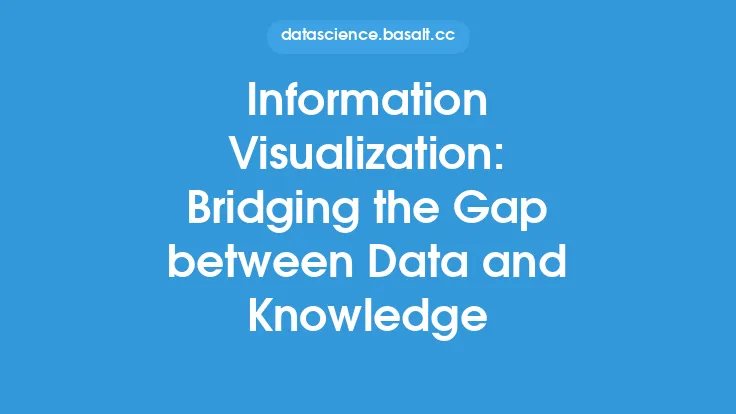In today's fast-paced business landscape, organizations are constantly seeking ways to gain a competitive edge and make informed decisions. Two key concepts that have emerged as essential tools for achieving these goals are Business Intelligence (BI) and Data Visualization. By combining these two disciplines, businesses can unlock the full potential of their data and drive success. In this article, we will delve into the world of Business Intelligence and Data Visualization, exploring how they work together to provide actionable insights and support data-driven decision-making.
Introduction to Business Intelligence
Business Intelligence refers to the processes, technologies, and tools used to transform raw data into meaningful and useful information for business analysis and decision-making. BI involves gathering, storing, and analyzing data from various sources, such as customer interactions, sales, and marketing efforts, to identify trends, patterns, and correlations. The primary goal of BI is to provide stakeholders with accurate and timely information, enabling them to make informed decisions that drive business growth and improvement. BI encompasses a range of activities, including data mining, reporting, and analytics, and is often supported by specialized software and tools.
The Role of Data Visualization
Data Visualization is the process of communicating information and insights through graphical representations, such as charts, graphs, and maps. By using visual elements, Data Visualization helps to simplify complex data, making it easier to understand and interpret. Effective Data Visualization enables users to quickly identify trends, patterns, and correlations, and to gain a deeper understanding of the underlying data. In the context of Business Intelligence, Data Visualization plays a critical role in presenting complex data insights in a clear and concise manner, facilitating faster and more accurate decision-making.
Combining Business Intelligence and Data Visualization
When combined, Business Intelligence and Data Visualization form a powerful alliance that enables organizations to extract maximum value from their data. By applying Data Visualization techniques to BI data, businesses can create interactive and dynamic dashboards, reports, and scorecards that provide real-time insights into key performance indicators (KPIs) and business metrics. This integration allows users to explore data in a more intuitive and engaging way, facilitating the discovery of new insights and patterns that might be hidden in traditional tabular reports. Furthermore, the combination of BI and Data Visualization enables organizations to monitor and analyze large datasets, identify areas for improvement, and track the effectiveness of business strategies and initiatives.
Technical Aspects of Business Intelligence and Data Visualization
From a technical perspective, the integration of Business Intelligence and Data Visualization requires a range of tools and technologies. These may include data warehousing and business analytics software, such as Oracle, Microsoft SQL Server, or IBM Cognos, as well as Data Visualization tools like Tableau, Power BI, or D3.js. Additionally, organizations may leverage big data technologies, such as Hadoop or Spark, to handle large volumes of data and perform advanced analytics. The choice of technology will depend on the specific needs and goals of the organization, as well as the complexity and scale of the data being analyzed.
Best Practices for Implementing Business Intelligence and Data Visualization
To ensure the successful implementation of Business Intelligence and Data Visualization, organizations should follow several best practices. First, it is essential to define clear goals and objectives for the BI and Data Visualization initiative, aligning them with the overall business strategy. Next, organizations should establish a robust data governance framework, ensuring that data is accurate, complete, and consistent across all systems and sources. Additionally, businesses should invest in user training and support, enabling stakeholders to effectively use and interpret Data Visualization tools and outputs. Finally, organizations should continuously monitor and evaluate the effectiveness of their BI and Data Visualization initiatives, making adjustments and improvements as needed to ensure maximum value and impact.
Real-World Applications and Case Studies
The combination of Business Intelligence and Data Visualization has numerous real-world applications and benefits. For example, a retail organization might use Data Visualization to analyze customer purchasing behavior, identifying trends and patterns that inform marketing and sales strategies. A healthcare provider might leverage BI and Data Visualization to track patient outcomes, monitor disease patterns, and optimize treatment protocols. A financial services firm might use Data Visualization to analyze market trends, identify investment opportunities, and manage risk. These examples illustrate the versatility and potential of Business Intelligence and Data Visualization, highlighting their ability to drive business success and improvement across a range of industries and sectors.
Future Directions and Emerging Trends
As the field of Business Intelligence and Data Visualization continues to evolve, several emerging trends and technologies are likely to shape its future direction. These include the increasing use of artificial intelligence (AI) and machine learning (ML) to automate and enhance BI and Data Visualization processes, as well as the growing importance of cloud-based and mobile BI solutions. Additionally, the rise of augmented and virtual reality technologies is expected to enable new forms of immersive and interactive Data Visualization, further enhancing the user experience and facilitating deeper insights and understanding. As these trends and technologies continue to unfold, organizations that invest in Business Intelligence and Data Visualization will be well-positioned to capitalize on new opportunities and drive long-term success.

